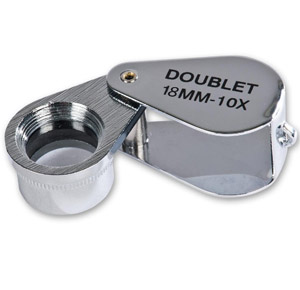|
An Introduction To Light Microscopy For Younger People and Beginners |
|||
|
The Microscope |
|||
|
A range of accessories for a microscope can be purchased separately. None of these are strictly necessary at a starter lever. A pair of tweezers might assist very young people in putting slides on and off the stage and reduces any risk of breaking the thing glass slide and cutting oneself. A polariser can be of value to an experienced microscopist as a method of revealing processes not seen so readily, if at all, with non-polarised light. |
 A 10x doublet magnifier sometimes called a loupe. |
||
| << PREVIOUS | NEXT >> | ||